Gone But Not Forgotten
Honoring Our Fallen Heroes
Harris County Sheriff’s Office Honor Guard
The Harris County Sheriff’s Office Honor Guard was formed in December 1977, primarily for the purpose of providing appropriate honors for the funeral services of Harris County Sheriff’s deputies slain while in the performance of duty.
Become a Sheriff's Office Honor Guard Deputy. To see a photo gallery,
About the HCSO Honor Guard

The Harris County Sheriff's Office is the largest Sheriff's office in Texas and the third largest in the United States. Our more than 4,000 employees are committed to the safety of the nearly 4 million residents who call Harris County home.
The Harris County Sheriff’s Office Honor Guard was formed in December 1977, primarily for the purpose of providing appropriate honors for the funeral services of Harris County Sheriff’s deputies slain while performing their duty.
In addition, the Honor Guard now provides Sheriff’s Office representation at funerals for retired and active duty personnel who died of natural causes, and makes appearances at parades and other public functions as requested.
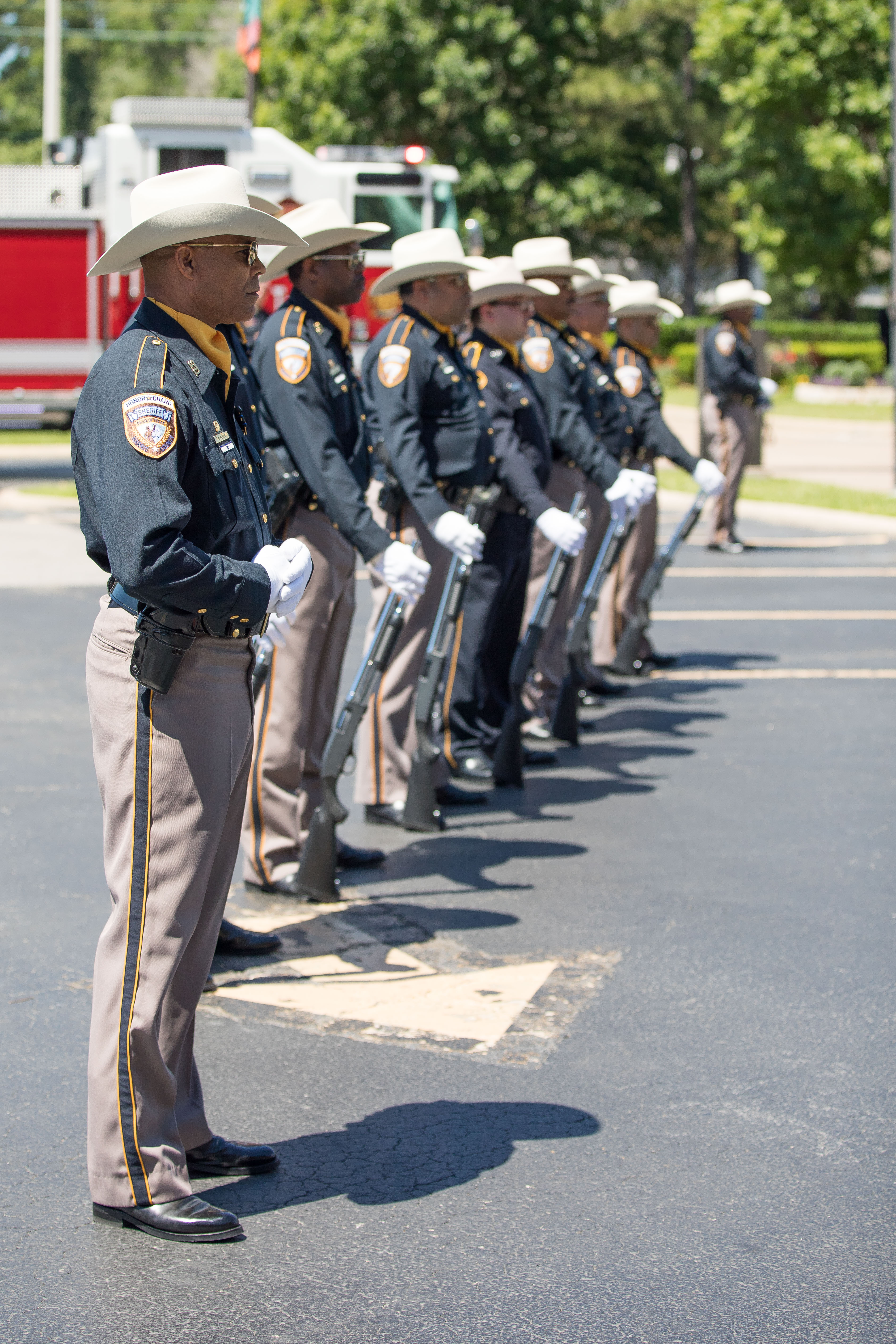
The color guard carries the National Colors and other flags appropriate to its position in the chain of command.
Typically these include a unit flag and a departmental flag. In addition to the flag bearers, who are positioned in the center of the color guard, there are two individuals who carry rifles.
The unit commander is responsible for the safeguard, care, and display of the organizational colors.

The Harris County Sheriff’s Office has recorded fifty (50) officers that have been killed or lost their lives in the line of duty.
The first officer recorded to have died in the line of duty was in 1895 with the most recent recorded in 2021.
The deadliest years have been 1914, 1974, 1996, and 2000. Officers attending a fallen hero's funeral wear a mourning badge cover over their badges. This tradition has a long history.
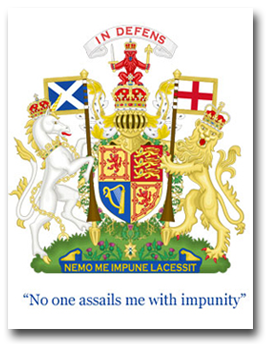
This history dates back to the Order of the Thistle in 809. The Scottish royal coat of arms displays a lion rampant inscribed with:
“Nemo Me Impune Lacessit.”
“No One Assails Me With Impunity”
Scottish immigrants brought many traditions with them, including playing Scottish bagpipe music at funerals. Many found careers in law enforcement.
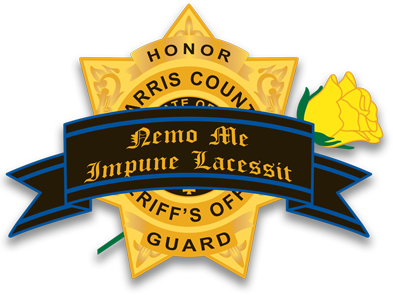
Peace officers also wear the Mourning Badge Cover with these same Latin words:
“No One Assails Me With Impunity”
The mourning badge cover means: We All Stand As One.

Today, the tradition of playing bagpipes at funerals for law enforcement officers continues.
Also, this tradition is no longer for just the Irish or Scottish. The bagpipes have become a special feature of a fallen hero's funeral.
The most famous song played at law enforcement funerals is Amazing Grace.
The bagpipes add a special flair and dignity to a funeral for a life of service.
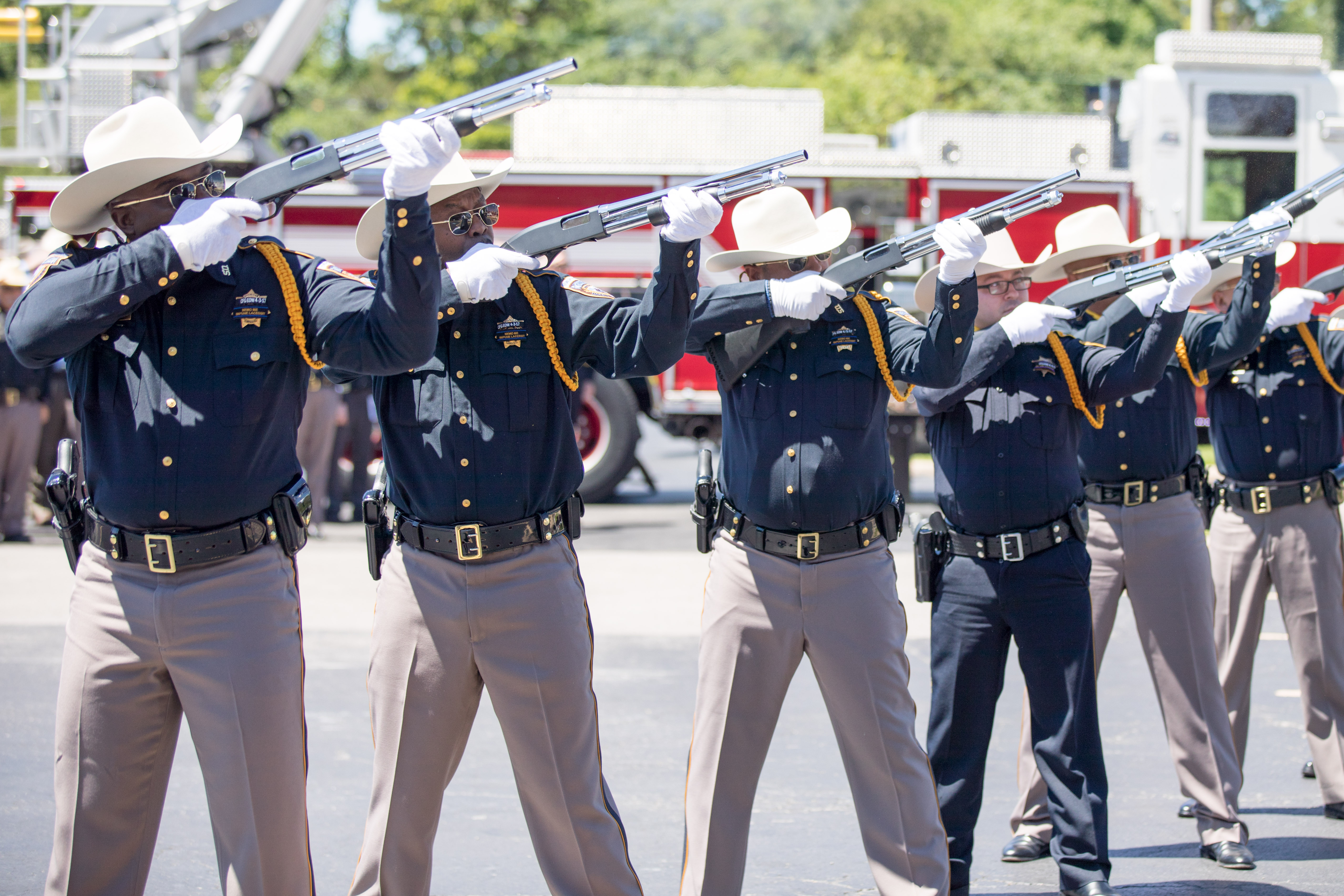
The twenty-one gun salute is one of the most ceremonial honors paid to officers that are killed in the line of duty.
It is a ceremonial act performed at military and police funerals as part of the drill and ceremony of the Honor Guard. It consists of a rifle team firing blank cartridges into the air three times. A rifle team consists of seven members and a Squad Leader. The firearm used is typically a shotgun for police funerals. The rifle team usually stands so that the muzzles are pointed over the casket. On the command of the Squad Leader, the rifle team raises their weapons and fires three times in unison.
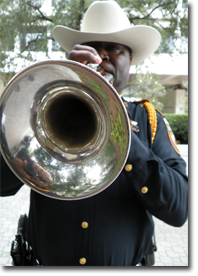
Blue – There are two pieces of music that particularly stir the hearts and emotions of Americans – The Star Spangled Banner and Taps.
The playing of Taps is one of the final activities at the committal, usually at the cemetery.
Either an on-site bugler, if one is available, or a recorded playing of taps is acceptable. It is one of the most moving and memorable events used to close out police funerals.
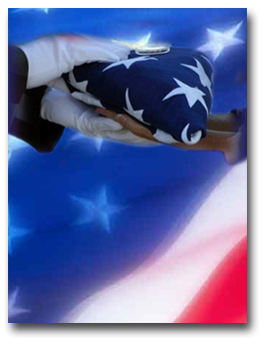
The ancient customs and traditions observed at this final parting include the presentation of a folded American Flag.
This ceremony represents the religious principles on which our country was originally founded.
When the flag is completely folded, the stars are uppermost, reminding us of our motto, “In God We Trust.”